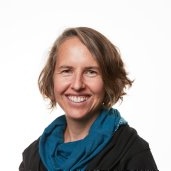PERBEDAAN FREKUENSI SAKIT BAYI USIA 6-12 BULAN YANG DIBERIKAN ASI EKSKLUSIF DAN NON ASI EKSKLUSIF
Downloads
Abstrak
Latar belakang : Angka Kematian Bayi (AKB) yang tinggi masih menjadi permasalahan di Indonesia. Berbagai upaya telah dilakukan untuk menurunkan angka morbiditas dan mortalitas. Salah satunya dengan pemberian ASI eksklusif. Namun, cakupan ASI eksklusif di Indonesia masih belum mencapai angka yang diharapkan. Pada tahun 2017 cakupan pemberian ASI eksklusif di Surabaya terendah berada di Kelurahan Sidotopo Wetan, yaitu sebesar 51,94%. Penelitian ini bertujuan untuk mengetahui perbedaan frekuensi sakit bayi usia 6 – 12 bulan yang diberikan ASI eksklusif dan non ASI eksklusif. Metode : Jenis penelitian analitik observasional dengan rancangan penelitian cross-sectional. Sampel sejumlah 102 ibu yang memiliki bayi usia 6 – 12 bulan ( 53 bayi ASI eksklusif dan 49 bayi non ASI eksklusif). Sampling dengan cluster sampling. Variabel dependen adalah frekuensi sakit, variabel independen adalah bayi usia 6 – 12 bulan yang diberikan ASI eksklusif dan non ASI eksklusif. Instrumen yang digunakan adalah kuesioner. Analisis data menggunakan chi square(α = 0,05). Hasil : Bayi dengan ASI eksklusif sebagian besar memiliki frekuensi sakit yang jarang (79,2%), sedangkan bayi non ASI eksklusif sebagian besar memiliki frekuensi sakit yang sering (85,7%). Hasil uji chi square( p<0,001, OR=22,9), yang berarti bahwa terdapat perbedaan frekuensi sakit pada bayi usia 6 – 12 bulan yang diberikan ASI eksklusif dan non ASI eksklusif di Kelurahan Sidotopo Wetan, Surabaya. Kesimpulan : Bayi yang diberikan ASI eksklusif memiliki frekuensi sakit lebih jarang daripada bayi yang tidak diberikan ASI eksklusif.
Abstract
Background: High Infant Mortality Rate (IMR) is still a problem in Indonesia. Various efforts have been made to reduce morbidity and mortality. One of them is exclusive breastfeeding. However, the coverage of exclusive breastfeeding in Indonesia still has not reached the expected rate. In 2017 the lowest coverage of exclusive breastfeeding in Surabaya was in Sidotopo Wetan Village, which was 51.94%. This study aims to determine the difference frequency of illness in infants aged 6 - 12 months are given exclusive breastfeeding and non-exclusive breastfeeding. Method: Type of observational analytic study with cross-sectional study design. A sample of 102 mothers who had infants aged 6 - 12 months ( 53 infants exclusively breastfeeding and 49 infants non-exclusive breastfeeding). Sampling with cluster sampling. The dependent variable is the frequency of illness, the independent variable is infants aged 6 - 12 months are given exclusive breastfeeding and non-exclusive breastfeeding. The instrument used was a questionnaire. Data analysis using chi square (α = 0.05). Results: Most infants with exclusive breastfeeding had a rare frequency of illness (79.2%), while most non-exclusive breastfeeding infants had frequent frequency of illness (85.7%). Result of chi square test (p<0.001, OR=22,9), which means that there were differences frequency of illness in infants aged 6-12 months were given exclusive breastfeeding and non-exclusive breastfeeding in Sidotopo Wetan Village.Surabaya. Conclusion: Infants are given exclusive breastfeeding have a less frequency of illness than infants are not given exclusive breastfeeding.
Cai, L. et al. (2015) ‘Effect of feeding pattern on infant illness in Chinese cities', Public Health Nutrition, 19(7), pp. 1252–1259. Available at: https://pdfs.semanticscholar.org/73ef/2fc1441b77a09046237db858b25e45bc4669.pdf?_ga=2.18118650.237568305.1561345480-2140971198.1561345480.
Chidiebere, O. D. and Stanley, O. (2014) ‘Effect of Exclusive Breastfeeding on Incidences of Illness in Infant ' s First 6 Months of Life', Journal of Pediatrics & Neonatal Care, 1(4), pp. 1–7. Available at: https://pdfs.semanticscholar.org/98ae/8a96e5fb0a544af70fb10a69436571ae2990.pdf.
Dinas Kesehatan Surabaya (2018) Profil Kesehatan Kota Surabaya Tahun 2017. Surabaya: Dinas Kesehatan Kota Surabaya.
Iswari, B. M., Nurhidayah, I. and Hendrawati, S. (2017) ‘Hubungan status Imunisasi: DPT-HB-HIB dengan Pneumonia pada Balita Usia 12-24 Bulan di Puskesmas Babakan Sari Kota Bandung', 8(2), pp. 101–115. Available at: ejournal.umm.ac.id/index.php/keperawatan/article/download/4324/4756.
Kadaruddin, Arsyad, D. S. and Rismayanti (2014) ‘Faktor yang Berhubungan dengan Kejadian Diare pada Bayi di Wilayah Kerja Puskesmas Pallangga Kabupaten Gowa', pp. 1–14. Available at: http://repository.unhas.ac.id/bitstream/handle/123456789/10971/KADARUDDIN K11108339.pdf?sequence=1.
Kaloh, dkk (2017) ‘Kepatuhan Melakukan Imunisasi Dasar dengan Angka Kesakitan pada Bayi Usia 9 - 12 Bulan di Puskesmas Modoinding', e-Journal Keperawatan, 5(November), pp. 1–7. Available at: http://ejournal.unsrat.ac.id/index.php/jkp/article/download/17868/17389.
Kaur, A. et al. (2016) ‘The Effect of Exclusive Breastfeeding on Hospital Stay and Morbidity due to Various Diseases in Infants under 6 Months of Age : A Prospective Observational Study', International Journal of Pediatrics. Available at: https://www.hindawi.com/journals/ijpedi/.
Kemenkes RI (2015) Profil Kesehatan Indonesia Tahun 2014. Available at: http://www.depkes.go.id/resources/download/pusdatin/profil-kesehatan-indonesia/profil-kesehatan-indonesia-2014.pdf (Accessed: 22 June 2019).
Kemenkes RI (2017) Profil Kesehatan Indonesia Tahun 2016. Available at: http://www.depkes.go.id/resources/download/pusdatin/profil-kesehatan-indonesia/Profil-Kesehatan-Indonesia-2016.pdf (Accessed: 22 June 2019).
Khan, J. et al. (2015) ‘Timing of breastfeeding initiation and exclusivity of breastfeeding during the first month of life: effects on neonatal mortality and morbidity--a systematic review and meta-analysis.', Matern and Child Health Journal, 19(3). Available at: https://www.ncbi.nlm.nih.gov/pubmed/24894730.
Khasanah, Y. U. and Rahayu, D. M. (2013) ‘Hubungan Pemberian ASI Eksklusif dengan Frekuensi Sakit pada Bayi Umur 6 - 12 Bulan', Jurnal Ilmu Kebidanan, 3(1), pp. 41–48. Available at: http://jurnal.akbiduk.ac.id/assets/doc/170116015339-7 HUB PEMBERIAN ASI EKSKLUSIF.pdf.
McIssaac, K., Moineddin, R. and Matheson, F. (2015) ‘Breastfeeding as a Means to Prevent Infant Morbidity and Mortality in Aboriginal Canadians: A Population Prevented Fraction Analysis.', Canadian Journal of Public Health, 106(4), pp. e217-22. doi: 10.17269/cjph.106.4855.
Porth, C. (2011) Essentials of Pathophysiology: Concepts of Altered Health States. 3rd edn. Edited by Lippincoott Williams & Wilkins. North America.
Qoyyimah, A. U. and Rohmawati, W. (2017) ‘Dampak pemberian ASI eksklusif terhadap Kejadian Sakit pada Bayi Usia 6 - 12 Bulan di Kabupaten Klaten', (February), pp. 2013–2018. Available at: lpp.uad.ac.id/wp-content/uploads/.../URECOL_ANNA-UQ_STIKES-MUKLA.pdf.
Tamimi, M. A., Jurnalis, Y. D. and Sulastri, D. (2016) ‘Hubungan Pemberian ASI Eksklusif dengan Kejadian Diare pada Bayi di Wilayah Puskesmas Nanggalo Padang', Jurnal Kesehatan Andalas, 5(1), pp. 149–153. Available at: http://jurnal.fk.unand.ac.id/index.php/jka/article/view/460/388.
WHO (2016) Pneumonia. Available at: https://www.who.int/news-room/fact-sheets/detail/pneumonia (Accessed: 22 June 2019).
1. The journal allows the author to hold the copyright of the article without restrictions.
2. The journal allows the author(s) to retain publishing rights without restrictions
3. The formal legal aspect of journal publication accessibility refers to Creative Commons Atribution-Share Alike 4.0 (CC BY-SA).
This Journal (e-ISSN 2656-7806) is licensed under a Creative Commons Attribution-ShareAlike 4.0 International License.
















